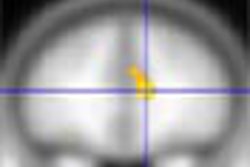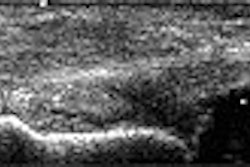TORONTO - A proton magnetic resonance spectroscopy (MRS) neuroimaging study of children with attention deficient/hyperactivity disorder (ADHD) has turned up a mystery, according to a presentation Monday at the Rotman Research Institute conference. The Canadian study indicated that the brain chemistry of children with ADHD is more complex than previous research has shown.
In this small study conducted at Dalhousie University in Halifax, Nova Scotia, 14 children, ages 7-11, were asked to perform the stop signal task, a standard cognitive test, explained Sandra Sparkes, a doctoral candidate at Dalhousie. Her co-authors included psychiatrist Dr. Normand Carrey and fellow student Frank MacMaster.
Of the 14 children, eight were diagnosed with ADHD. In the stop signal task, the children were asked to press one of two marked buttons as quickly as possible when the corresponding symbol appeared on a screen. But if they heard a bell, they were told to stop pushing the button.
"Typically, children with ADHD are shown to be very poor at pulling back," Sparkes said "They react quickly but can’t stop themselves once they get going. But in this case, there were no significant differences in performance among the groups, although there was wide individual variability."
Their reaction times were correlated with 1-H MRS-derived levels of four brain chemicals in the right prefrontal cortex and left striatum: N-acetyl-aspartate (NAA), glutamate, choline, and creatine.
Sparkes and her colleagues found that the ratio of NAA to creatine was lower in ADHD children with slower reaction times and higher in control children with slower reaction times. "We have no idea how to make sense of this," she said.
NAA is usually seen as a marker of neuronal viability, and decreased absolute quantities of NAA in the left prefrontal cortex have been shown in adults with ADHD, Sparkes told AuntMinnie.com. "So that somewhat makes sense -- reduced NAA, reduced neuronal viability," she said.
What was puzzling was the relationship between reaction times and NAA levels in this study, she said. "As the control kids got slower," she said, "the higher their NAA was." On the other hand, the slower ADHD children had lower levels of NAA, resulting in a "a totally opposite relationship," Sparkes added.
On average -- and in contrast to earlier studies -- the ADHD children had higher NAA levels than the controls, she said, although the difference was not statistically significant.
"We’re thinking that children with ADHD are just a lot more sensitive to NAA, and when they do have that extra level of NAA, they really use it in their processing," Sparkes said. "The biggest take-home message is that this is an area of research that we need to go into -- we need to link chemical levels with cognitive function. There’s something here and we need to explore it."
By Michael SmithAuntMinnie.com contributing writer
March 18, 2003
Related Reading
fMRI reveals secrets of better memory, January 13, 2003
Strike a pose: PET sheds light on benefits of yoga, December 31, 2002
MRI shows differences between adults with ADHD, controls, December 9, 2002
Brain volume in ADHD reduced but growth remains normal, October 9, 2002
Copyright © 2003 AuntMinnie.com



















